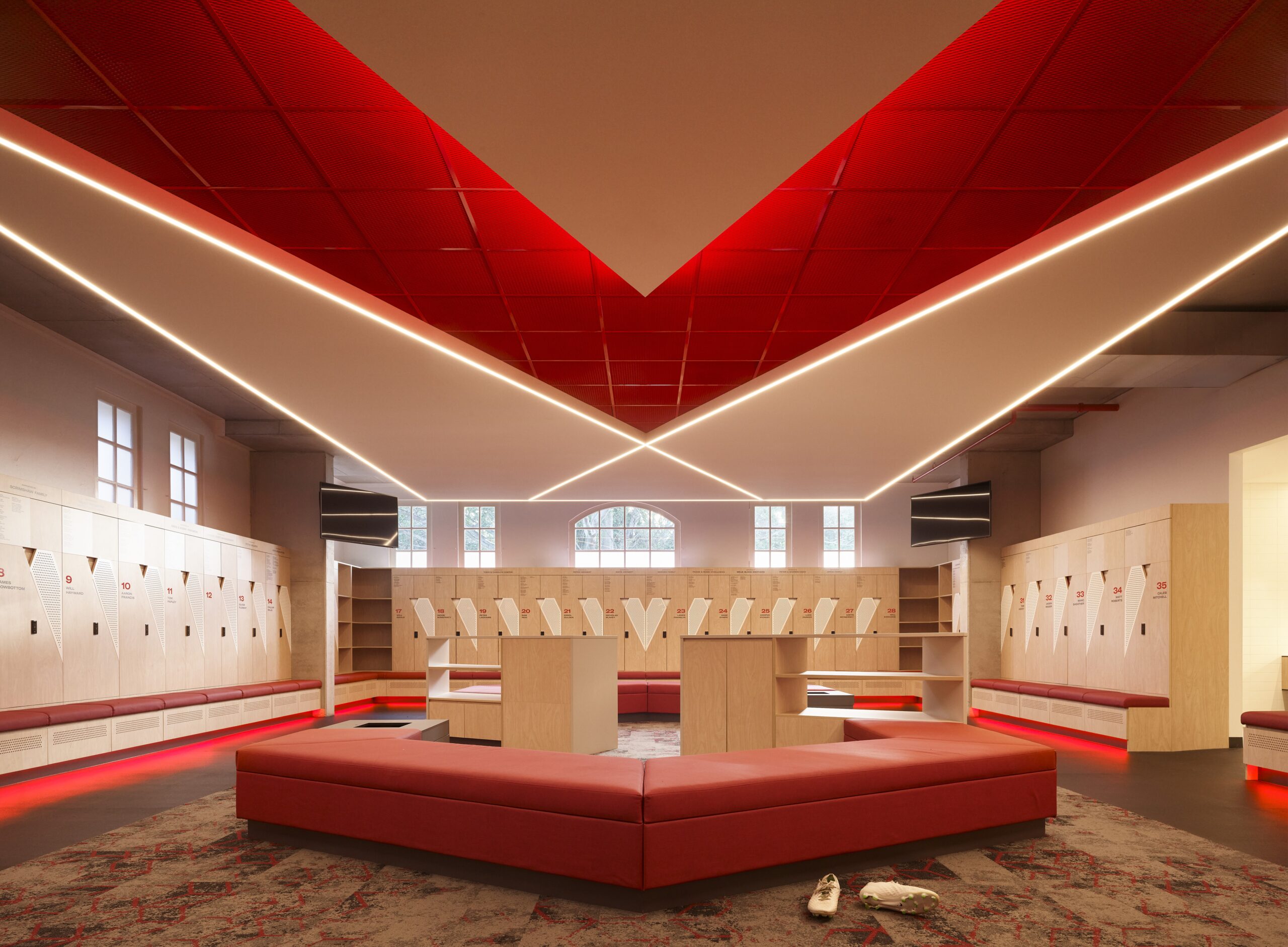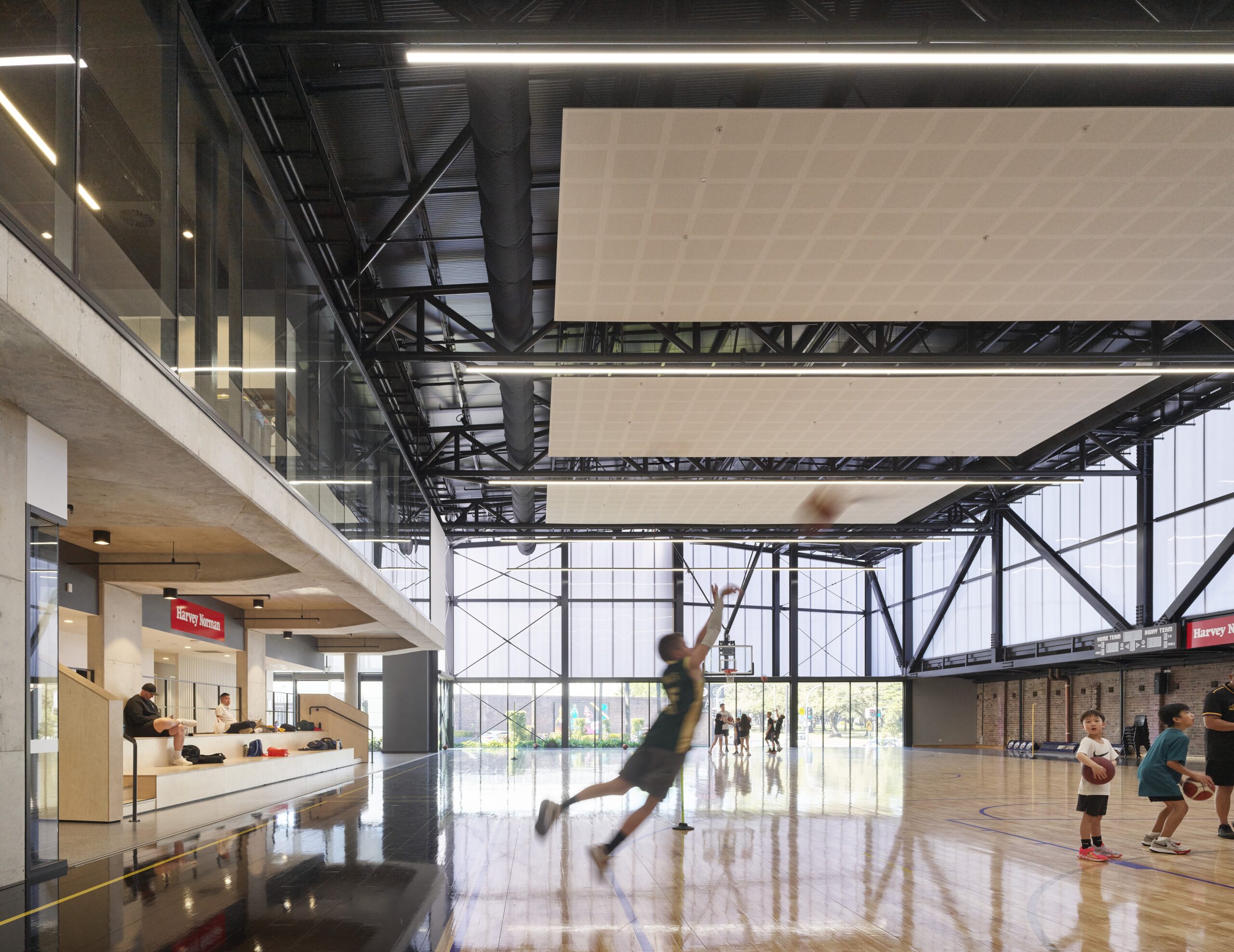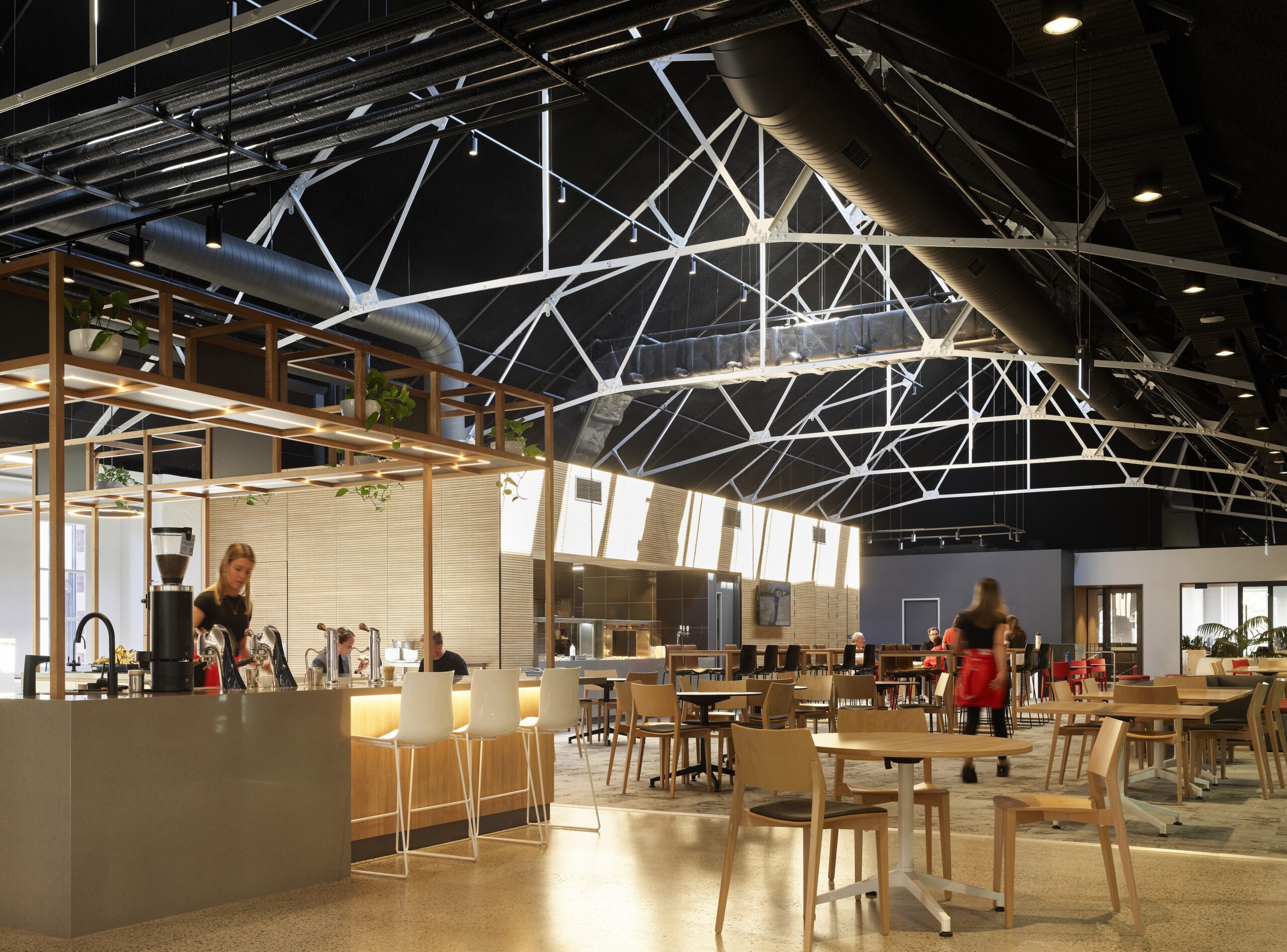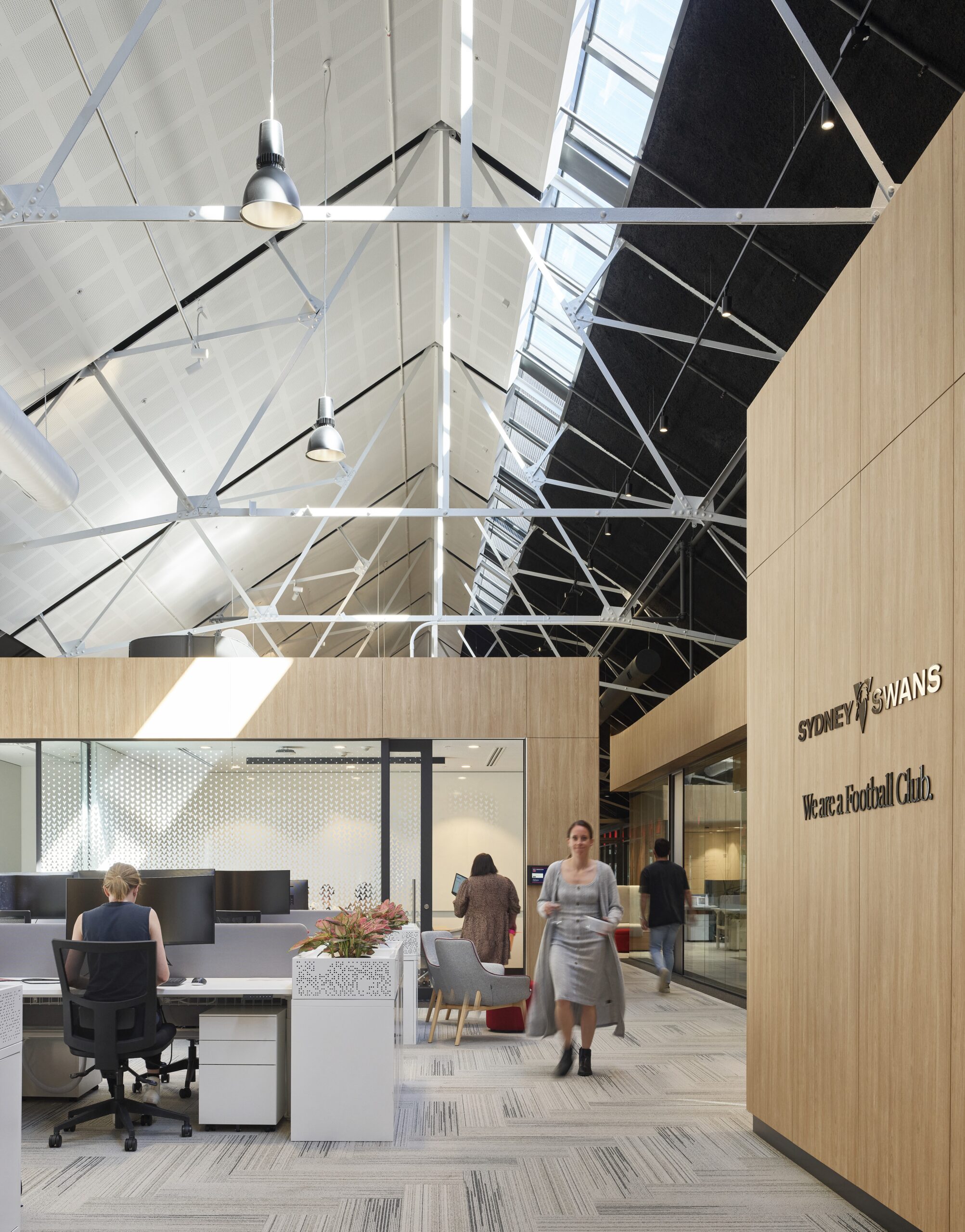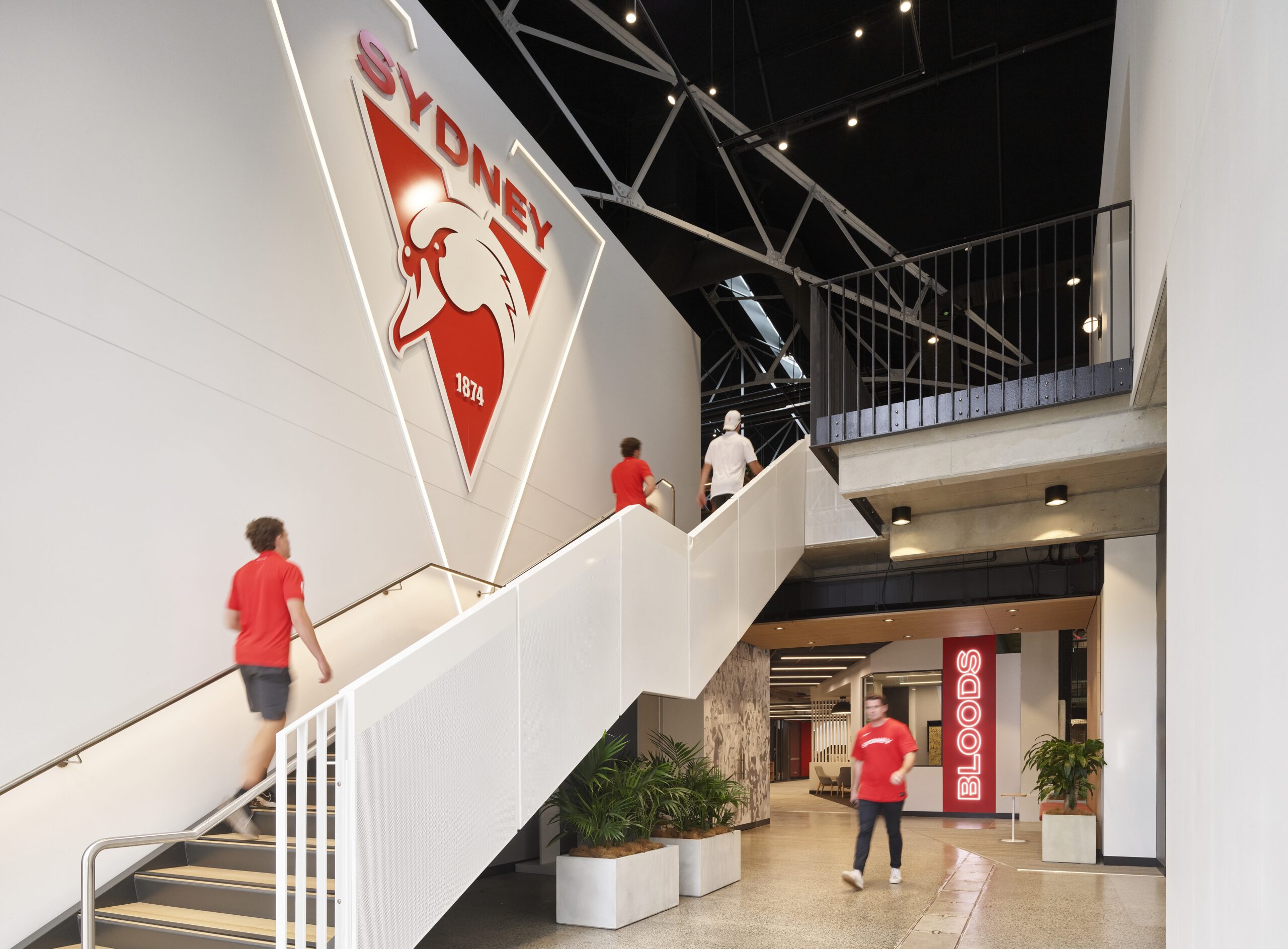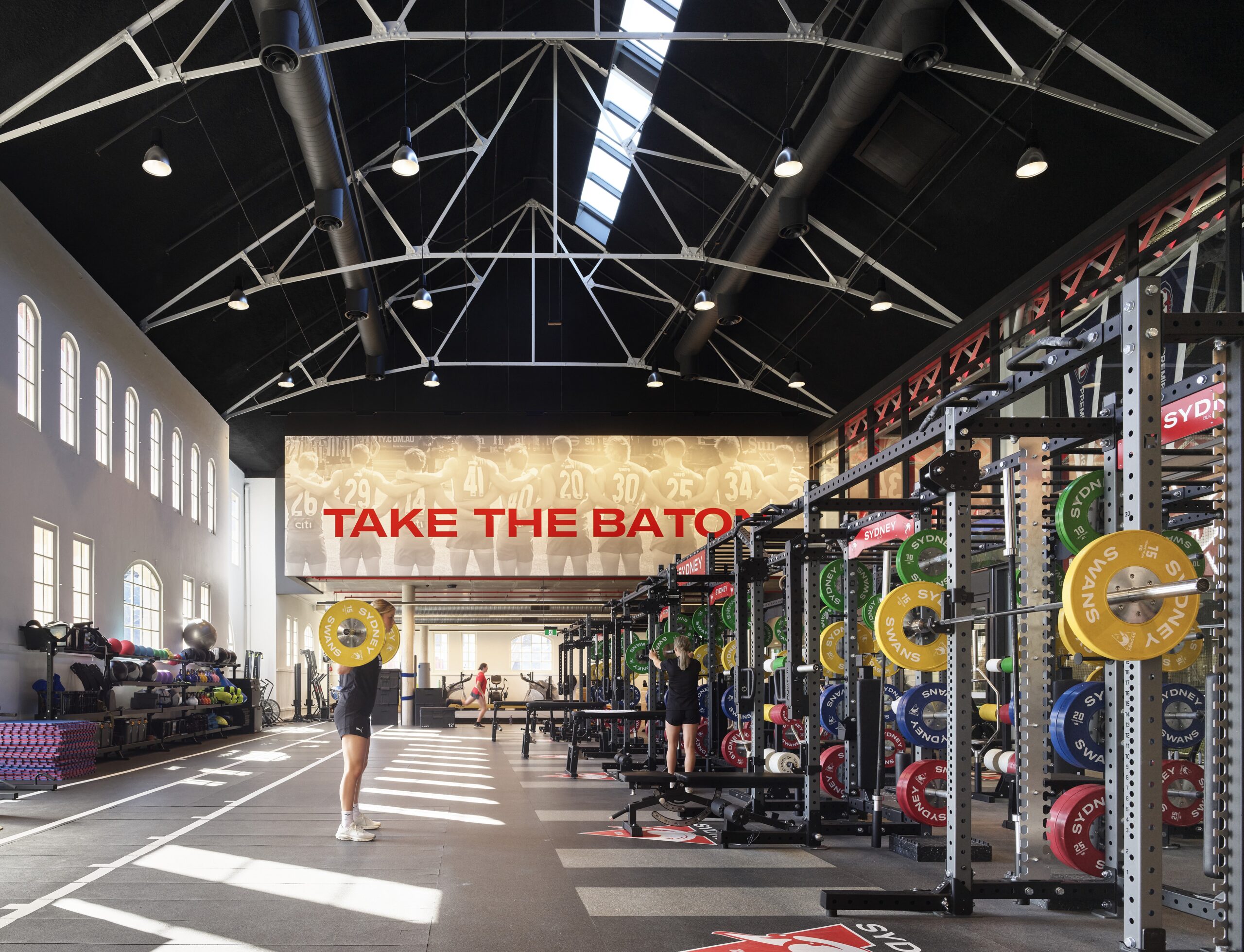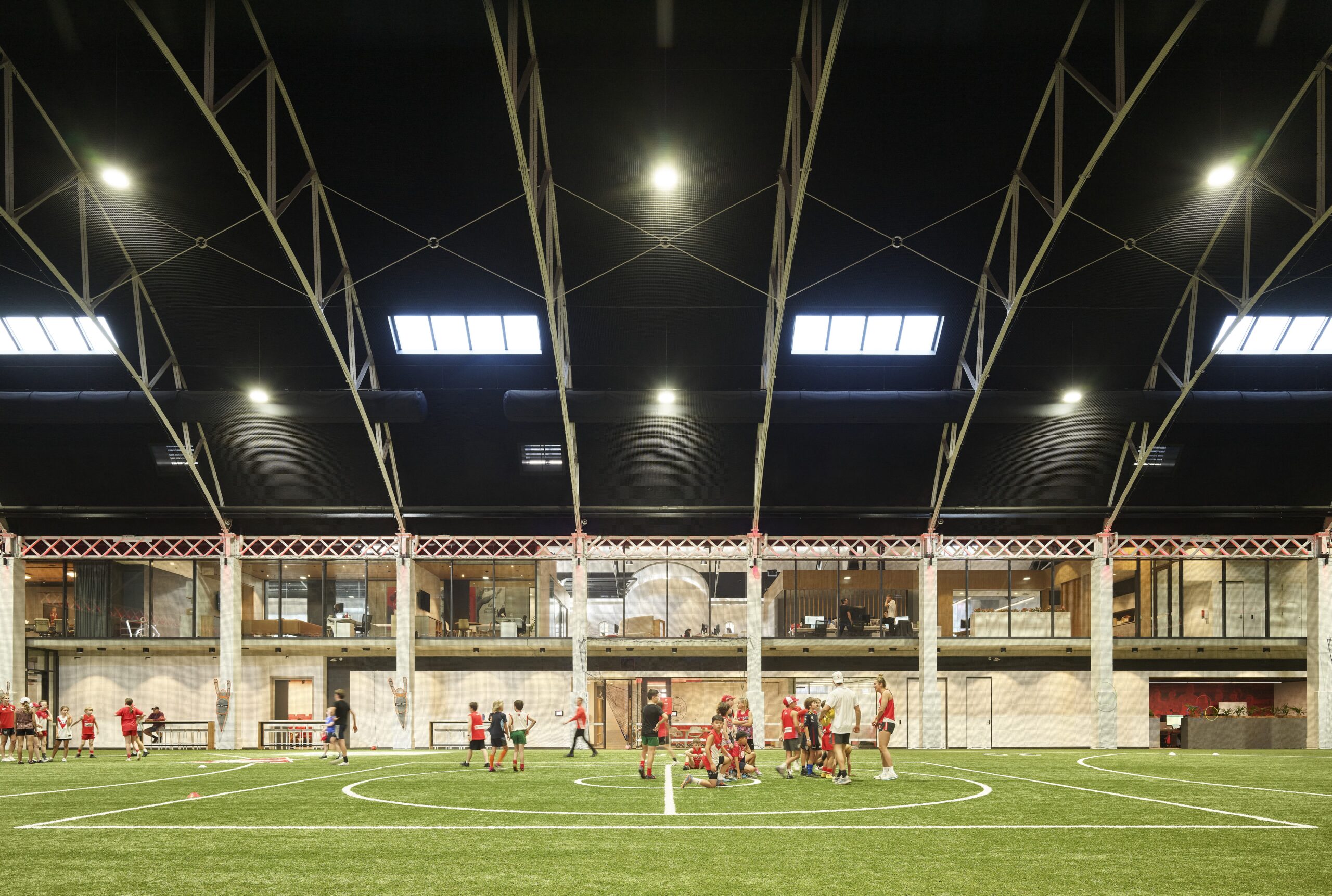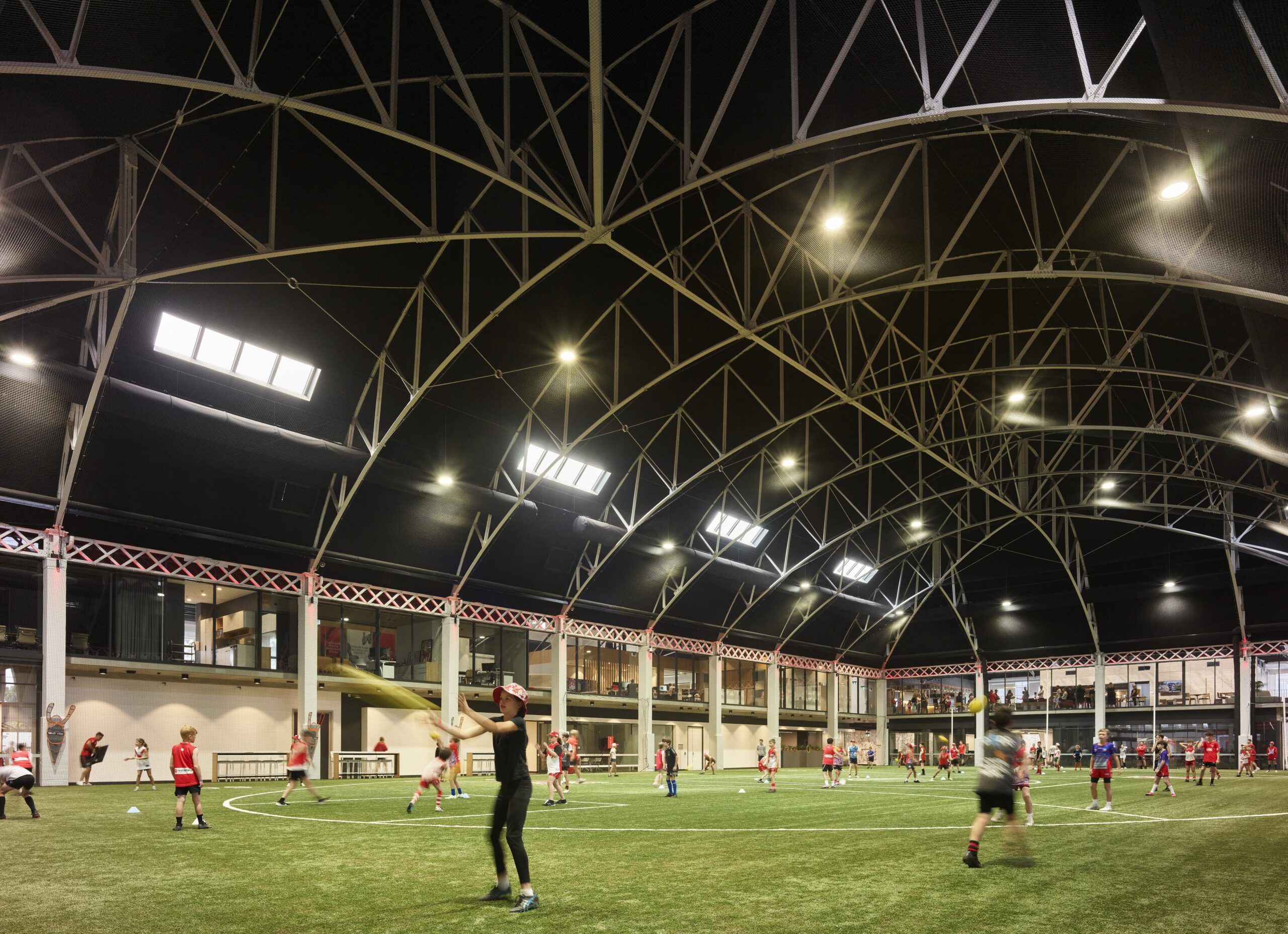The Sydney Swans HQ at the Royal Hall of Industries | Populous

2024 National Architecture Awards Program
The Sydney Swans HQ at the Royal Hall of Industries | Populous
Traditional Land Owners
The Gadigal & Bidjigal people
Year
Chapter
New South Wales
Category
Heritage
Interior Architecture
Sustainable Architecture
Builder
Photographer
Media summary
Sydney Swans HQ is the adaptive re-use of The Royal Hall of Industries at Moore Park into a unique high performance training facility. Established by the Royal Agricultural Society, for over a century the RHI has been an integral part of the city’s event life.
The Redevelopment has breathed new life into the hall, seeing the building operating all year round. The design team collaborated closely with the club to meticulously plan the internal layout of the facility while respecting and enhancing the hall’s original features to showcase the ornate roof trusses and defined entry porticos.
By repurposing and revitalising this beloved landmark, the Sydney Swans HQ stands as a testament to the adaptive reuse of historical architecture and a showcase of the city’s commitment to both sporting and community engagement. The facility is targeting a 5-star Green Star certification and has established a new home for the football club.
2024
New South Wales Architecture Awards Accolades
Commendation for Heritage
New South Wales Jury Citation
Award for Commercial Architecture
Housed within the iconic Royal Hall of Industries (RHI), Sydney Swans HQ embodies a remarkable integration of culture, heritage, athleticism, and responsibility in a workplace.
Oriented by the footprint of the historic building, a range of public, sports and corporate spaces orbit an indoor playing field. It is clear that the design process involved close collaboration with the Swans organisation – spaces for players, coaches, support and organisational staff are laid out based on functional, aspirational and pastoral considerations. The Club’s daily operations, interactions with an interested public, and celebration of the team on Game Day all find manifestation in the architectural layout. Traditional hierarchical structures were dismantled to foster collaboration through communal areas and consultation space, giving the architecture a key role in the ongoing evolution of the football club, by encouraging inclusion and the wellbeing of athletes.
By repurposing and revitalizing the RHI, the Sydney Swans HQ is a successful adaptive reuse that shows the potential of collaboration with an informed client. Its thoughtful design respects the Hall’s storied past and positions it as a dynamic hub for the team’s contribution to the broader sporting landscape. The building deserves recognition for its significant contribution to architecture and organisational development.
Commendation for Heritage Architecture
Over 111 years, an immense number of Australians across multiple generations have experienced the Royal Hall of Industries (RHI) as Royal Easter Show patrons, soldiers during both World Wars, influenza patients, dancers, skaters, and Mardi Gras revelers. New strategically placed Sydney Swans functions occupy two-story internal additions housing corporate functions and training rooms, carefully inserted wholly within the original structures.
Commendable restraint has been shown to locate additional functional spaces beyond the RHI in separate buildings. Crucially the original and immense long-span central exhibition hall serves as a perfect all-weather practice green, preserving appreciation of the technological and cultural significance of this important Sydney landmark.
Swans HQ has been a game changer for our football club, bringing our men’s, women’s, and academy teams under the one roof. The central indoor training field puts football at the heart of the building and connects everyone in the organisation to our teams, while the shared dining space has become our campfire, bringing staff, athletes, corporate partners, and the community together. Populous has done an incredible job fusing the old with the new, turning the iconic Royal Hall of Industries into a world-class facility that everyone at our club is proud to call home.
~Drew Arthurson, COO, Sydney SwansClient perspective
